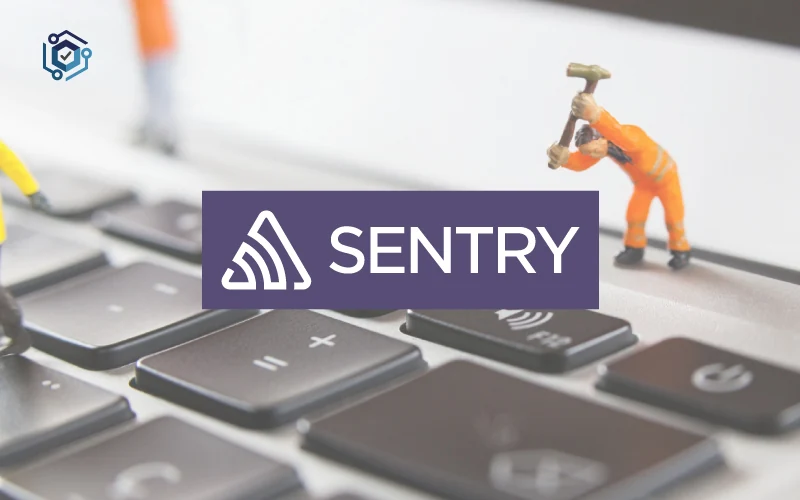Whether we are building a web application, a mobile app, or any other type of software, it’s inevitable that we’ll encounter situations where something goes wrong. It’s in these moments that Sentry comes into play, a powerful error management and real-time monitoring tool. In this article, we’ll explain how it works, its benefits, and when to use Sentry.
What is Sentry and how does it work?
Sentry is an open-source software platform used to track, manage, and correct errors in applications. It operates by collecting information about errors and exceptions that occur in the code and providing an intuitive interface to visualize and analyze these issues. Sentry can be used with a wide variety of programming languages, such as Python, JavaScript, Ruby, and Java.
Sentry’s architecture is based on the concept of “capturers,” which are components integrated into the application code to detect and send information about exceptions and errors encountered. These capturers send the data to a Sentry server, where it is stored and presented in a user-friendly web interface. This enables developers to quickly see errors occurring in real-time and take action to resolve them.
Main benefits of using this platform
- Early error detection. Sentry provides instant visibility of errors and exceptions occurring in an application. This allows developers to identify and address issues before they impact end users.
- Real-time notifications. Sentry sends real-time notifications when a critical error occurs in the application. This enables development teams to respond immediately and minimize the impact of issues on users.
- Detailed error information. It gathers a wide range of information about errors, including stack traces, local variables, and user context. This detailed information makes it easier to reproduce and debug problems, expediting the error resolution process.
- Error grouping and categorization. Sentry automatically groups similar errors based on their root cause, helping developers identify common patterns and address recurring issues efficiently.
- Integration with development tools. Sentry integrates with a wide range of popular development tools, such as version control systems, issue tracking services, and CI/CD platforms. This integration provides a smoother development experience and streamlines the error-fixing workflow.
Use cases of Sentry
Sentry is a versatile tool that can be applied in various use cases in software development. Some examples include:
1. Production monitoring
Sentry stands out for its ability to monitor and track errors in real-time in a production environment. It provides an instant view of errors occurring in the application and offers detailed information about each of them. This enables development teams to identify critical issues and respond promptly to minimize the impact on end users. Proactive error monitoring with Sentry helps ensure product stability and availability.
2. Debugging in testing stages
During software testing stages, it’s common to encounter errors and issues that need to be debugged and fixed before release. Sentry can be used as an efficient debugging tool during these stages. By integrating Sentry into the testing workflow, developers can capture and log errors found, including detailed information about stack traces, local variables, and user context. This simplifies the error identification and resolution process, speeding up the development cycle.
3. Performance analysis
In addition to error tracking, Sentry collects information about application performance. It allows monitoring and recording of performance-related metrics, such as response times, database query performance, and other key indicators. This functionality helps development teams identify bottlenecks, optimize performance, and improve overall application efficiency. Sentry’s performance analysis is valuable in high-load environments where every millisecond matters.
4. Integration with development tools
Sentry easily integrates with a wide range of popular tools used in software development. This includes version control systems like Git, issue tracking services like Jira, and CI/CD platforms like Jenkins. Integration with these tools enables a smoother development experience and simplifies the error-fixing workflow. For example, when an error is logged in Sentry, it can automatically create a ticket in the corresponding issue tracking system for the development team to address promptly.
5. Tracking recurring errors
Sentry offers intelligent error grouping and classification functionality. This feature makes it easier to identify similar, frequently occurring errors and group them under a common incident. With a clear view of recurring errors, teams can address issues more efficiently. They can investigate the common root cause and apply global solutions that resolve all grouped cases instead of dealing with each error individually. This saves time and effort, improving product quality and stability.
Now you know when to use Sentry and how it works. Its ability to detect, track, and resolve errors in real-time helps developers maintain stable and reliable applications. With its wide range of features and ease of integration, Sentry has earned its place as a leading solution in error management and application monitoring. By implementing Sentry in the development process, teams can enhance software quality and provide an exceptional experience to their users.










